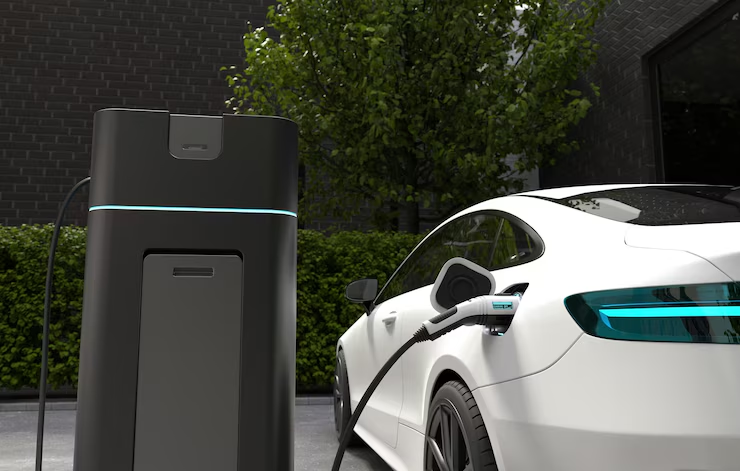Why Smart Charging Matters for Electric Vehicles
Interest in electric vehicles has gained enormous momentum in recent years, inspiring a new era of clean transportation. For everyday drivers, the shift to EVs raises essential questions: Where will I charge? How long will it take? What happens if too many people plug in at once? Innovative charging solutions are designed to answer these concerns, unlocking reliability, affordability, and flexibility that traditional charging options cannot provide. Information about the latest advancements—including rapid, software-enhanced charging systems and integrated technologies—can be found at https://www.delta-americas.com/en-US/products/EV-Charging/ALL/, where different types of smart charging setups illustrate just how far technology has come.
This dramatic shift isn’t happening in isolation. According to the International Energy Agency, EV sales grew remarkably, doubling from 2021 to 2022 and setting global records. Such rapid adoption is raising the urgency for more intelligent systems that optimize electricity use, manage demand on power grids, and help reduce emissions. As cities, fleets, and drivers join the electrification movement, the need for trustworthy, scalable, and user-friendly charging solutions has become impossible to ignore.
Core Benefits of Smart Charging Technology
- Load Management: Smart chargers automatically adjust output to suit current electricity demand by monitoring real-time usage. This ensures the grid isn’t overwhelmed during peak hours and helps balance the energy flow to all connected vehicles efficiently.
- Cost Savings: Many utility companies offer favorable rates to encourage charging during off-peak periods. Smart chargers can schedule sessions at those times, minimizing costs for households and businesses. Over time, such savings increase, especially for companies managing large electric vehicle fleets.
- Grid Integration: Smart chargers help store surplus wind or solar power when synced with renewable energy sources. This makes electric driving more sustainable by directly linking vehicles to clean electricity whenever it’s most plentiful.
- Data & Insights: Users and managers can access dashboards that reveal real-time consumption, trends, and alerts. Utility providers gain valuable data for forecasting and upgrading infrastructure. For drivers, these features help optimize charging habits and manage bills.
— Families with multiple EVs can even stagger charging at home to avoid electrical overload, adding another layer of safety and efficiency.
How Connected Networks Improve Charging Reliability
One of the most significant hurdles to widespread EV adoption is range anxiety—the worry that a charging station might be unavailable or nonfunctional when needed. Intelligent charging networks are combating this through seamless connectivity and proactive management. Real-time status updates, available through mobile apps and interactive websites, show which chargers are online, in use, or under maintenance. This means drivers can confidently plan their trips, knowing precisely what to expect before they arrive.
These innovations aren’t just about user convenience—they also drive down operational costs and downtime. Connected chargers can run self-diagnostic tests, automatically notify support when repairs are needed, and even receive firmware updates remotely to fix glitches before they become outages. As highlighted by the U.S. Department of Transportation, the expansion and modernization of charging networks is now viewed as a cornerstone of transportation strategy, particularly when deploying new infrastructure in urban centers and underserved areas.
The Role of Utilities and Policymakers
Utilities play a key behind-the-scenes role in making smart charging possible. By designing pricing models that reward charging at strategic times—such as overnight or during high renewable output—they help balance load on the grid while making EV operation more affordable. Some utilities also partner with software companies to roll out systems that actively communicate with chargers, distributing energy more evenly and preventing strain during unusual weather or spikes in usage.
Policymakers, meanwhile, are pushing for regulations that ensure all new construction, including homes and commercial properties, is ready to accommodate EV charging points. Many governments offer rebates, incentives, or grants to upgrade existing infrastructure and fund public charging stations. Through coordinated action, cities and states are shaping a landscape where mass EV adoption can happen smoothly, supporting consumers and the environment.
Smart Charging and Renewable Energy Adoption
The intersection of smart charging and renewable power holds enormous promise for the clean energy transition. By coordinating charging sessions with periods when the grid is flush with wind or solar power, EVs can “soak up” green energy that might otherwise go to waste. For individual drivers, programming a car to charge overnight or in the middle of the day isn’t just about convenience—it’s a small, impactful way to reduce carbon emissions.
On a broader scale, the emergence of vehicle-to-grid (V2G) technology allows EVs to become active grid participants. Cars and trucks, when parked and plugged in, can discharge power back into the network during times of high demand, effectively becoming mobile batteries. This flexibility increases energy security, adds new revenue streams for vehicle owners, and allows grid operators to maximize reliability using existing assets.
Challenges Facing Smart Charging Implementation
Despite impressive advancements, several challenges must be overcome before smart charging reaches its full potential. High initial infrastructure costs can slow deployment, particularly in rural and lower-income areas. Standardization is also an issue, as manufacturers and software providers often follow different protocols, leading to compatibility problems that frustrate users. Data privacy and cybersecurity are critical as networks collect and transmit increasing amounts of sensitive information.
- Significant investment in installation and ongoing maintenance is required to ensure reliability.
- Industry-wide standards are needed to ensure all vehicles and charging points work together seamlessly.
- Programs are needed to make charging affordable and accessible to all communities, especially where public stations are scarce.
These barriers highlight the need for continuous collaboration across public and private sectors and investments in workforce training and consumer education. Addressing these issues head-on will help to create a truly equitable and universal charging ecosystem.
Looking Ahead: What the Future Holds
The future of smart charging holds many exciting prospects. Automation, artificial intelligence, and advanced connectivity are on track to make charging nearly invisible to users—park, plug in, and let your vehicle and the grid handle the rest. Experts expect even faster charging, predictive maintenance alerts, and new billing models tailored to individual driving patterns. As battery innovation continues and global policies further prioritize sustainability, smart charging is set to become a pillar of transportation systems worldwide.
For cities preparing to electrify everything from buses to delivery trucks, these tools and trends represent a rare opportunity to create cleaner, healthier, and more efficient urban environments.
Taking the Next Step
For drivers weighing the move to electric, fleet managers planning future investments, and policymakers focused on building greener communities, smart charging is a logical step that promises wide-ranging benefits. As technology matures and solutions make the process more approachable, adoption is set to accelerate. By investing in these systems now, stakeholders can help shape a future where reliability, affordability, and sustainability move in lockstep, creating a transportation ecosystem that works for everyone, everywhere.

